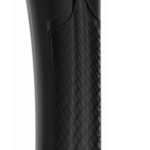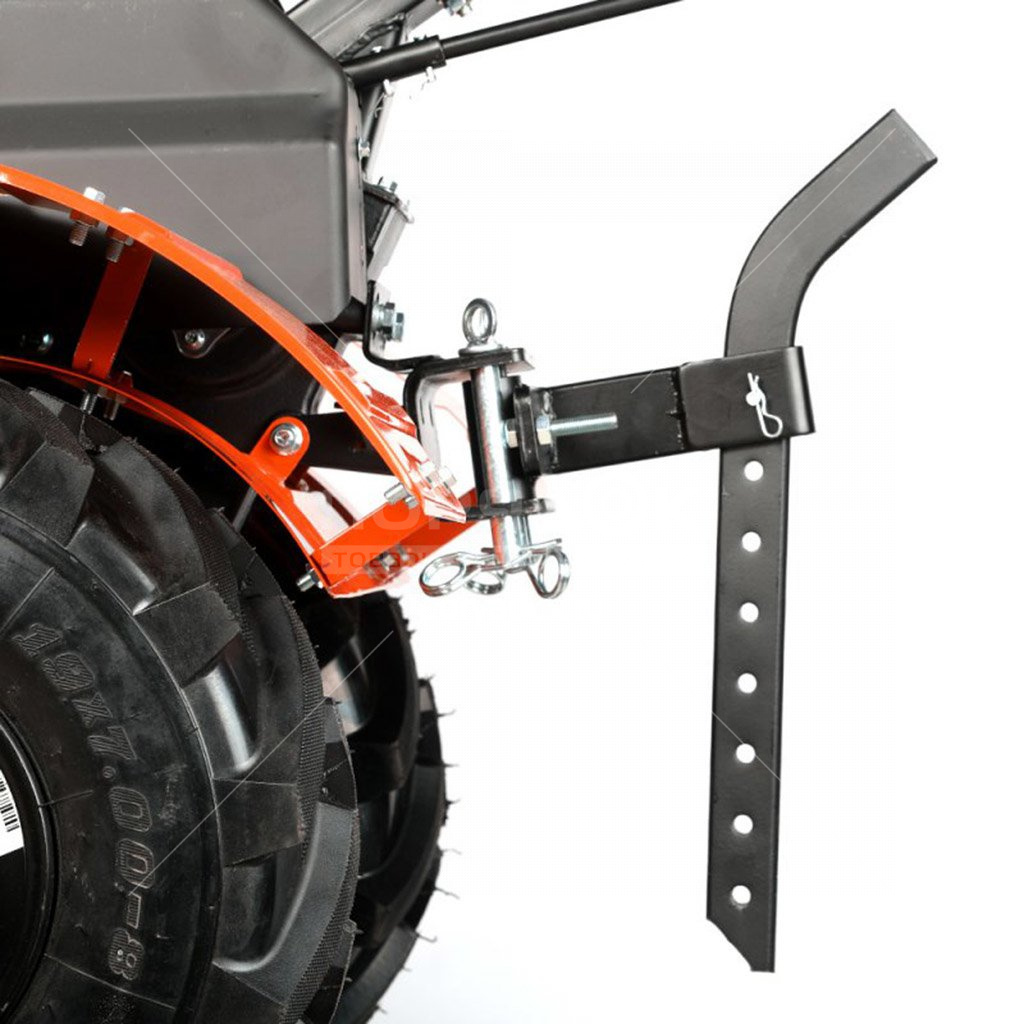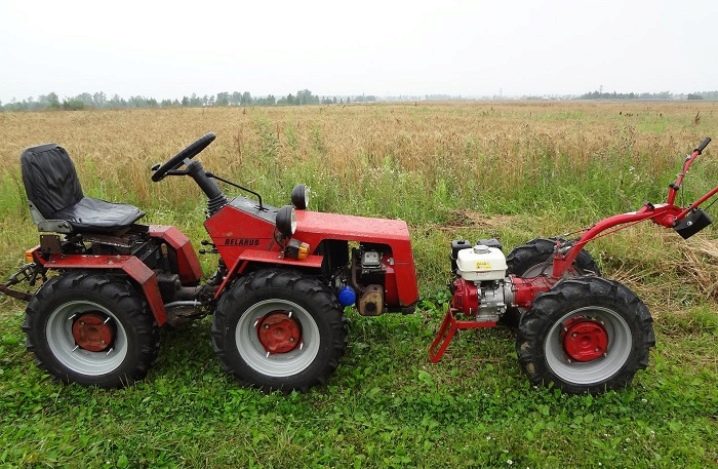Cultivation with a walk-behind tractor
Cultivating the soil with a walk-behind tractor is cultivating the land by loosening it without turning over the soil layers. During this process, the equipment crumbles and mixes the soil layer without destroying it. When using the no-moldboard method, the fertile soil layer is not affected, which allows you to get a good harvest. Milling cutters, that is, the working parts of a walk-behind tractor, can penetrate to different ground depths - they have different depths. This parameter depends on the equipment model.
Power and design of the unit allow it to work even with heavy and hard types of soil that cannot be processed in the usual way. The cutters effectively destroy weeds in the treated area.
The content of the article
How to prepare a walk-behind tractor for cultivation?
Wheels for transporting equipment must be replaced with working cutters. Eight knives, which are included in the standard kit, provide the most effective results in soil cultivation. One set of working knives is installed on the left and right sides of the device.
During the cultivation process, the cutters must be fed in the direction of movement of the walk-behind tractor, so it is necessary to install them correctly. The knives should not be too sharp so as not to burrow into the depths, but to move forward. Otherwise, they will cut the ground, but not loosen it.
After installing the cutter and coulter on the walk-behind tractor, it can be used for cultivation.Before full commissioning, it is necessary to check its operation. The processing depth must correspond to the installed parts in order to prevent unnecessary load on them.
How to regulate plowing depth?
We install the coulter on the motoblock earring. This element allows you to adjust the depth of the cutters into the ground. To increase the depth at which processing is carried out, we lower the coulter down and use the upper holes for fastening. To reduce it, we lift it and fasten it through the lower ones.
If the cutters stall and get stuck in the ground, the reason may be the following:
- Moistened soil. Working knives often get stuck in damp soil.
- Compacted soil. Cultivation is done in 2 passes: the primary one at minimum depth and the main one at maximum depth.
- Incorrect installation of cutters. The instructions must be followed.
- Low driving speed. To increase the speed, you should set the regulator to maximum and engage a higher gear.
If the blades slow down and become stuck, the equipment may stall and stop working.
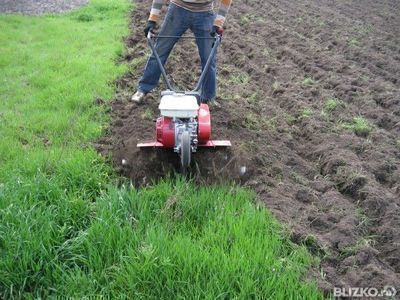
How to plow properly
When using a walk-behind tractor, you can select two types of transmission: high and low. When plowing the land, a lower level is chosen, and when cultivating it, on the contrary, it is increased. To improve the quality of cultivation, it is necessary to make the working parts rotate faster, that is, increase the speed by turning on a higher speed mode. The more revolutions the cutters make per unit of time, the better the soil is loosened. Increasing gears reduces the level of load placed on the walk-behind tractor engine.
After processing the first planting line, it is necessary to check the cultivation depth.If it is sufficient, you can move on to the next strip. When processing the second bed, you need to focus on the line left by the coulter. When using a walk-behind tractor, you should not press the steering wheel and push the machine forward: this may cause it to begin to bury itself in the ground.
The structure of the treated soil depends on the type of cutters used. After cultivation, the area may consist of large or small lumps of earth. Working knives are saber-shaped and made in the form of crow's feet.
Saber-shaped ones are made of durable carbon steel, which is heat-hardened during production. These are standard type rototillers included in the factory set of walk-behind tractors. Working “sabers” are quickly disassembled into parts, so they are easy to use.
Crow's feet are designed for complex areas of land that are difficult to cultivate. It is worth using them on virgin, rocky, hardened soils. The product has an inextricable metal structure that can be modified by welding.
To achieve maximum cultivation efficiency, it is worth carrying out preliminary loosening by plowing the area to a depth of 10 cm. After this, we carry out the treatment with cutters, deepening them to 15–25 cm.
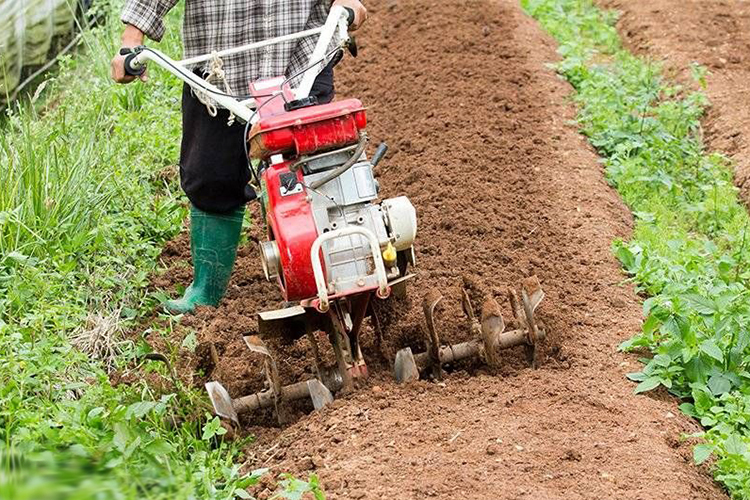
Safety precautions
When using a walk-behind tractor, in order to avoid unpleasant and unforeseen consequences, you must follow the operating instructions. Children should not be allowed to operate equipment. People who do not have experience in cultivating with a walk-behind tractor should not carry out the work alone. When using equipment, you must keep strangers and animals away from you. For cultivation, you need to wear closed clothing with long sleeves, long boots with metal toes, gloves and safety glasses. Failure to comply with safety conditions may result in device damage or injury.
When working with the tool, you need to make sure that your hands do not get caught between the rotating cutters. It is worth observing the front and rear levers, one of which should remain lowered. Before changing the direction of the walk-behind tractor, that is, moving from forward to reverse, it is necessary to stop the rotation of the working attachments. When the equipment is working, you need to listen to the vibrations that the engine makes. They usually indicate that there are problems that need to be fixed.
If you cultivate the soil with cutters instead of plowing it with a plow, then after the snow melts it will become compacted and require new cultivation. Operating equipment on compacted soil after winter puts an increased load on the walk-behind tractor and complicates the task of cultivating land plots. The quality of tillage, the controllability of the walk-behind tractor, the applied force and the load on the engine depend on the installation.



